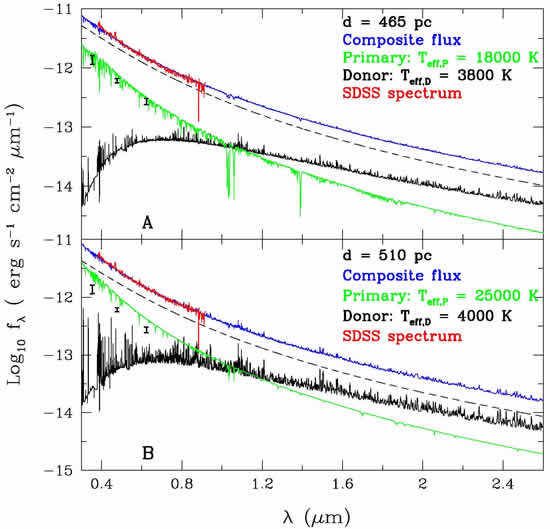Research Gallery > The Theoretical Astrophysics (Theory)
Research Gallery
The Theoretical Astrophysics (Theory)
| Theoretical Spectra of the AM CVn Binary System SDSS J0926+3624: Effects of Irradiation onto the Donor Star |
|
Image Credit: Sengupta and Taam

It can be seen that the donor can reveal emission lines in the infrared region. Observations of both the continuum and lines in this wavelength region will provide important insight on the thermal state of the donor star and, hence, provide an observational test of the binary evolutionary history of these systems.
|
| Interacting binary systems with white dwarf components, known as AM CVn binaries, exist with orbital periods as low as 5 minutes and as long as 65 minutes. These systems evolve as a result of the loss of orbital angular momentum associated with the emission of gravitational wave radiation. Here, the low mass component transfers mass to its companion, resulting in a variation of the component masses and the orbital period as a function of time. As an application of the evolutionary modeling, the spectral energy distribution of the eclipsing system, SDSS J0926+3624 has been investigated. This system has an orbital period of 28.3 minutes and the observational properties of both its donor and accretor are known from the eclipse event. Based on detailed models of the non-LTE spectrum for the accretor and the irradiated donor, their combined spectrum with that from an accretion disk can fit the observed spectrum. The spectral fits are presented for different distances to the system in the accompanying figure. (Sengupta and Taam 2011, ApJ, 739, 34) |
 asiaa.sinica.edu.tw Media Request: epo
asiaa.sinica.edu.tw Media Request: epo asiaa.sinica.edu.tw
asiaa.sinica.edu.tw 
